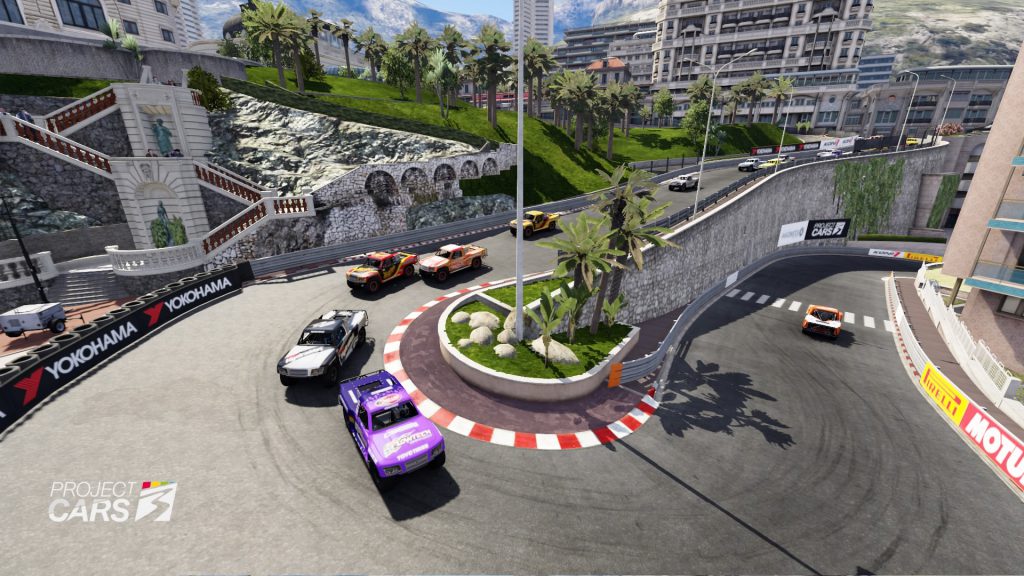It was evident ever since its announcement that Project CARS 3 was moving the franchise in a different direction from its hardcore sim racing roots.
The first two Project CARS games had career modes focused around real-world racing career paths, with players able to start in karting and move up through to faster formula cars, or equally start off racing Ginettas around UK circuits before ending up in a global endurance racing series.
Project CARS 3 doesn’t adopt that career mode structure and its overall presentation gives off a very different tone compared to the serious approach of the first two games.
Aside from the changes in presentation, each career event has a list of three objectives to complete, which include tasks such as overtaking a certain number of cars within a time limit, completing a clean lap, or drafting an opponent for a certain amount of time.
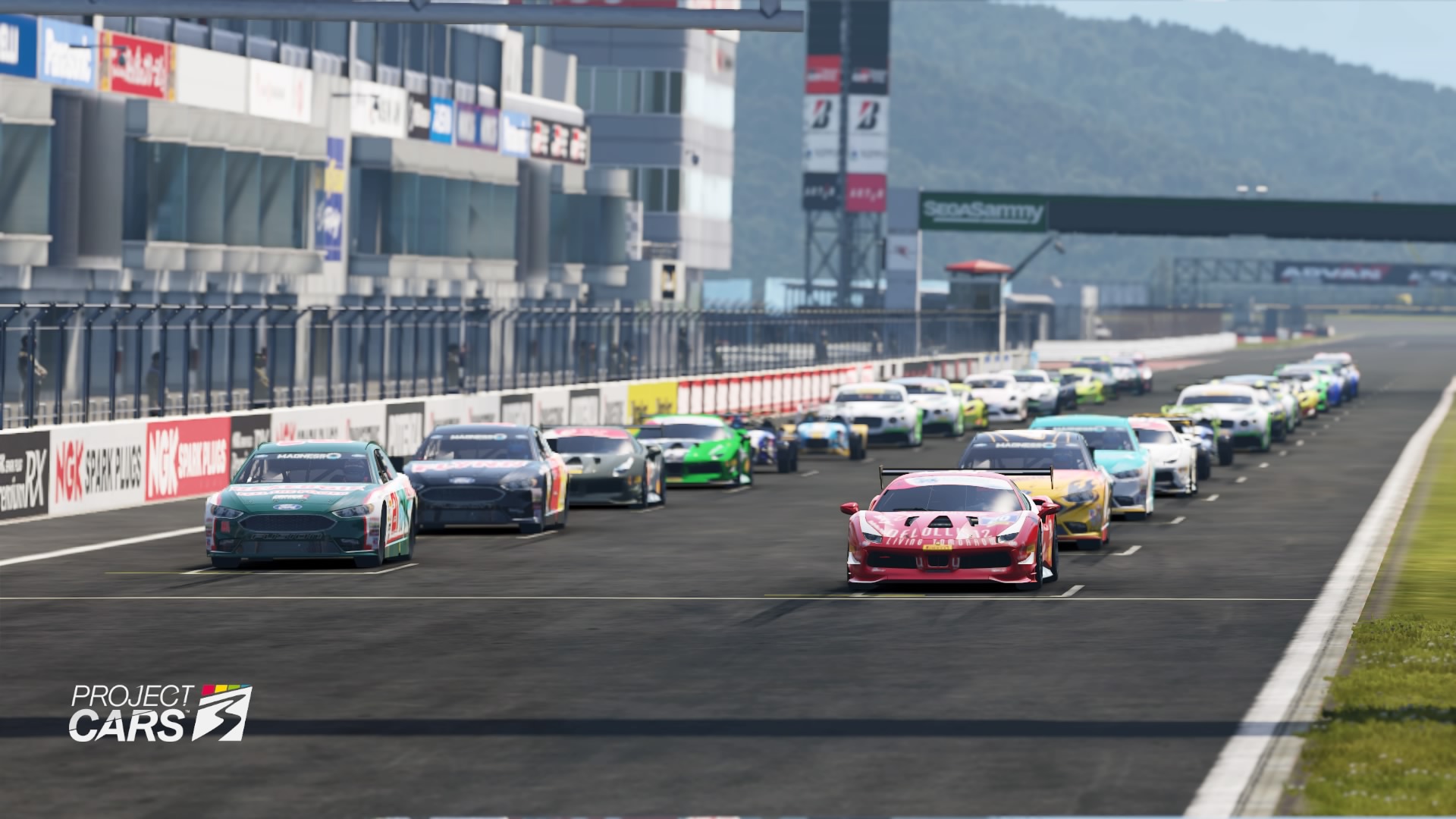
Plenty of the events don’t have any requirement as to where you should finish in the race, and how well you do is each career mode event is determined more so by the number of objectives you passed rather than where you crossed the finish line at the end of the race.
The objective-focused career mode is most comparable to the one in Driveclub, a PS4 exclusive racing game made by Evolution Studios – which has since become a part of Codemasters three and a half years before the latter also acquired Project CARS developer Slightly Mad Studios.
Perhaps the most obvious sign of the move away from hardcore, simulation racing to a more simplified and simcade experience is with one of the new career mode event types – breakout.
The aim is to drive through numbered blocks within a time limit to score as many points as possible, with smaller blocks worth more points.
It’s the sort of event that has long existed in racing games less focused on realism rather than simulation racing games, which naturally wouldn’t include an event like that due to its lack of relevance to real-world motorsport.
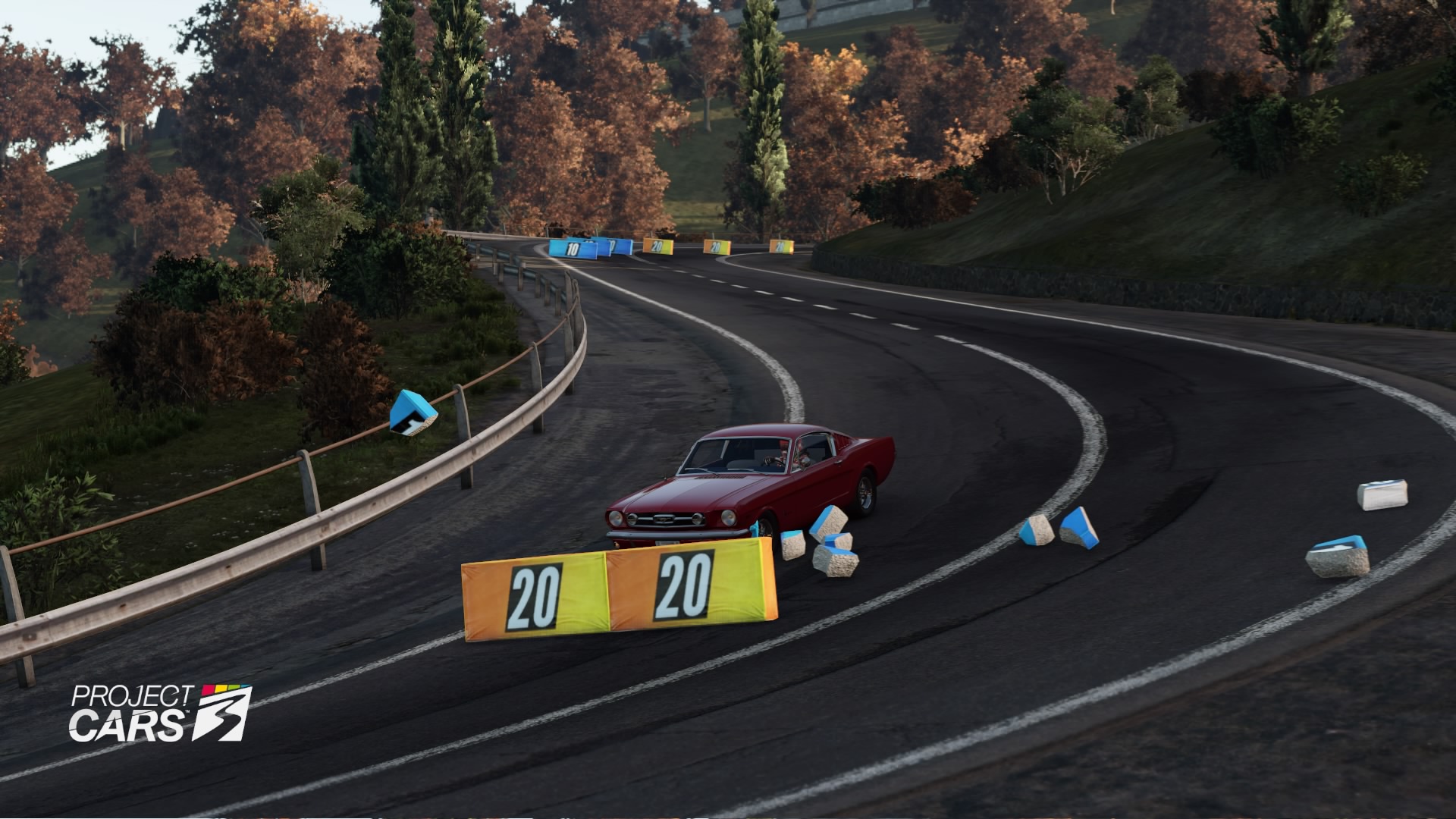
A corner mastery counter and a percentage counter telling you how often you drove on the racing line are new inclusions to the HUD, whereas the tyre temperature and wear graphic, which was in Project CARS 2, was removed for the latest game.
It ties into one of the most talked-about changes ever since it was announced in one of the developer blogs – the omission of tyre wear, fuel usage and pitstops.
If you’ve played Project CARS 2, then the car physics in the third game will be instantly familiar, although they’ve been simplified in the third installment.
Even with all the driving aids turned off, you’re far less likely to spin out on accelerating at the exit of a corner or lock up the wheels under heavy braking.
With tyre wear and tyre temperatures no longer in play, you’re always driving a car in its absolute best condition, which makes the game more forgiving to newcomers.

Therefore if you want to set up and run a race with some ridiculous stipulations, such as late-1950s/early-1960s racing cars around a snow-covered old Hockenheim layout in a blizzard, you can do that just as you could in the second game – although this time it’s much easier to keep your car pointing in a straight line.
Or for another example, you can have a grid of 32 super trucks racing around the cramped streets of Monaco.
Weather options remain largely unchanged from Project CARS 2, with blizzards and thunderstorms still options along with lighter rain or clear and sunny days.
The car and track list is similar to how it was in Project CARS 2, with one of the most notable new cars to be added into Project CARS 3 being a fully licensed 2019-2020 season Formula E car, with the liveries of every team that took part in the latest season included in the game, too.
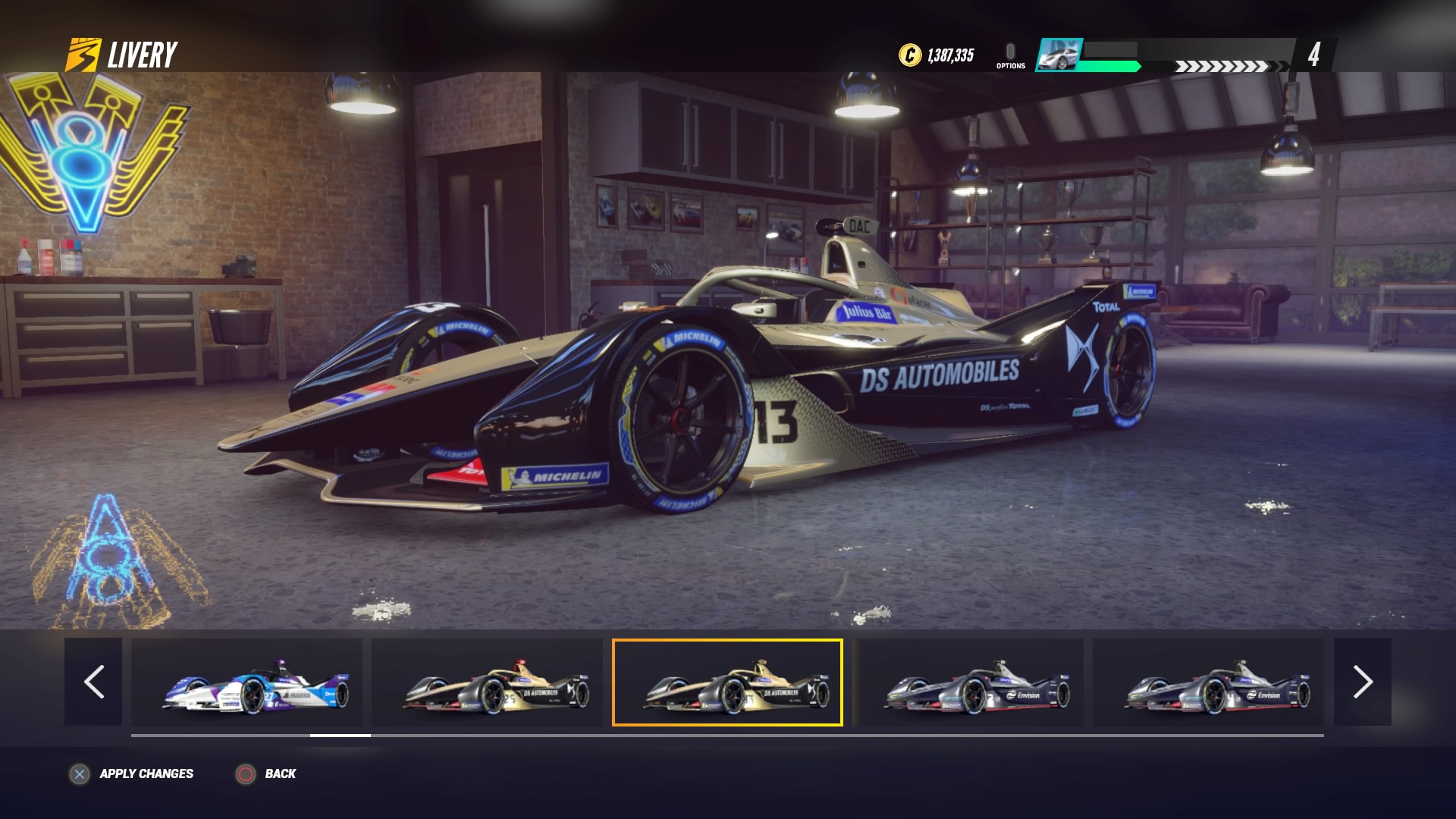
On the downside, rallycross cars and tracks are no longer in the game as Project CARS 3 is a tarmac-only racing game.
To help compensate for the drop in content variety is the addition of car upgrades for the first time in a Project CARS game.
Only the road cars and race modified versions can be upgraded, with the range of upgrades familiar to anyone who’s played a Gran Turismo game.
That includes converting most of the road cars into GT racing cars, which you can do at a reduced price if you’ve already purchased some upgrades for it when it’s a road car.
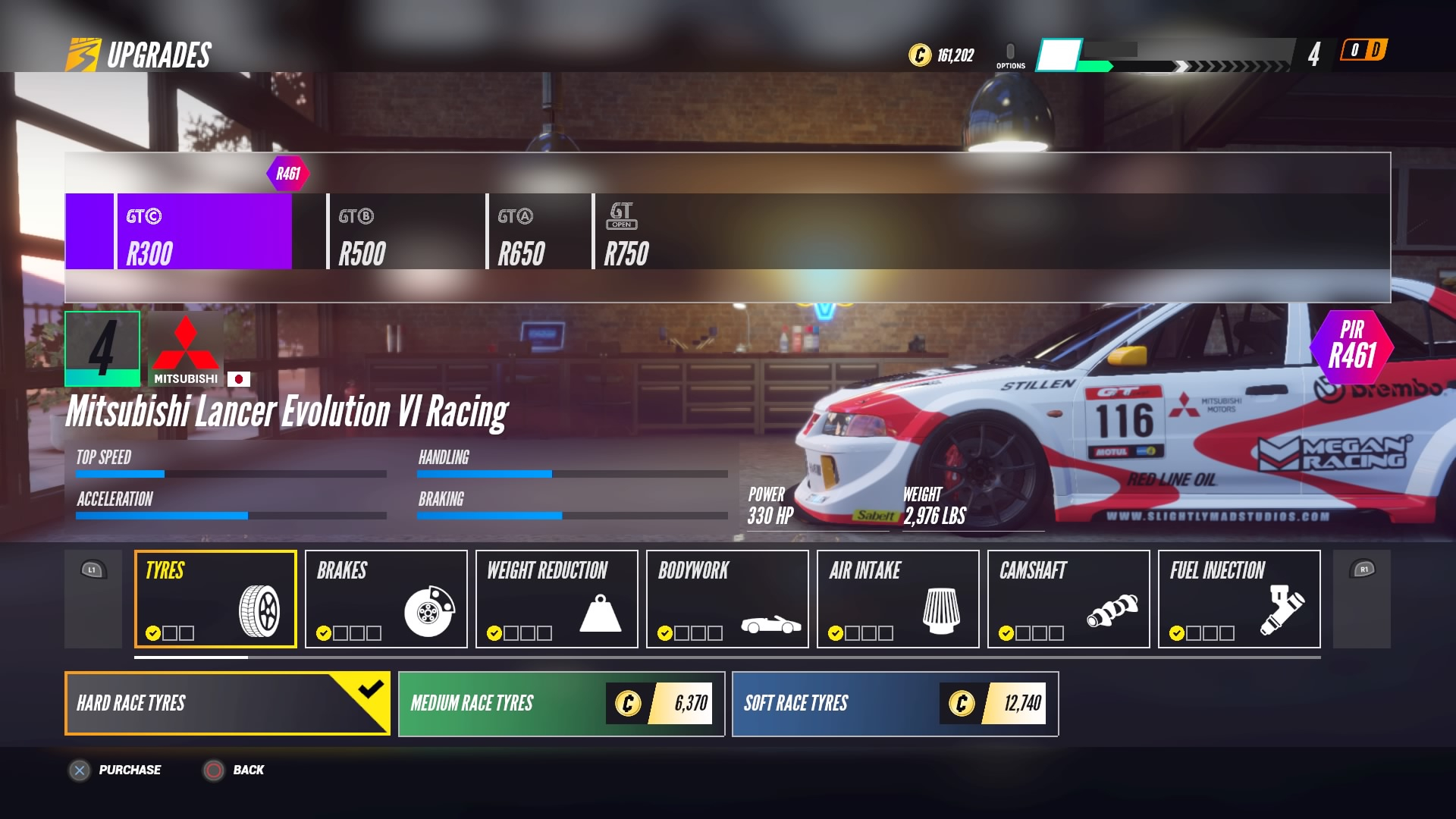
The upgrade system means players can tune a Nissan Skyline, which starts off in the slowest category of road cars, to be quick enough to race against the likes of Ferrari LaFerraris in the Hypercar class.
It’s more than just a gimmick as I personally found that to beat the fastest time goal in some of the time trial events, I had to upgrade a car from a lower category instead of lightly upgrading one of the cars from the category the event is in.
For example, a tuned BMW 2002 Turbo was much quicker in low-speed twisty circuits than any of the cars in the category above it, and an Aston Martin DB11 with upgraded tyres, aerodynamics and less weight was several seconds faster around some tracks than the lower-end cars from two classes above it.
It means as you progress up the classes there are more cars that could be used and it takes a lot of trial and error to see which car is the fastest for each event, whether it be a heavily-tuned car from a lower class or a near stock car from the category you’re competing in.
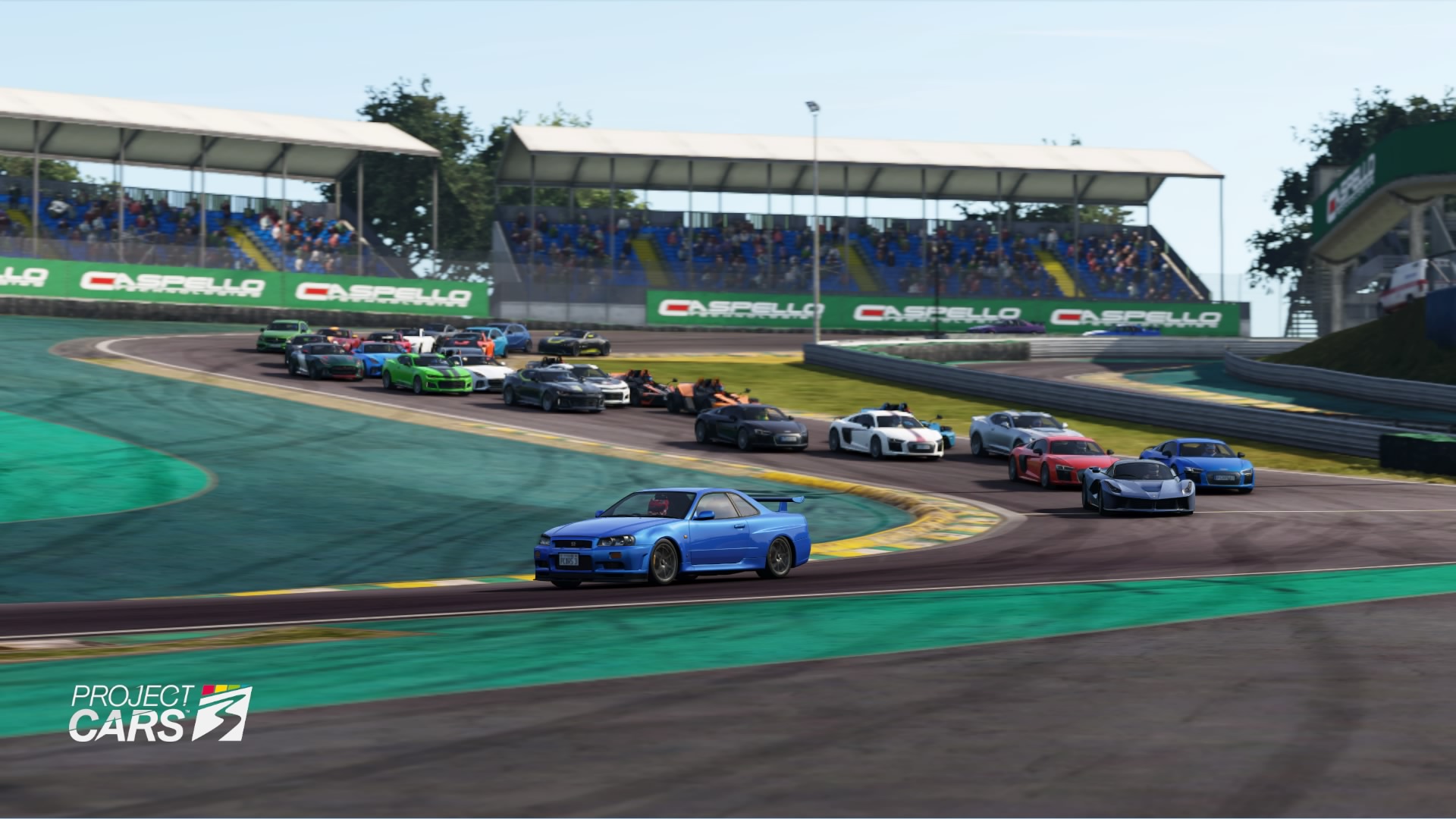
Overall Project CARS 3, while reminiscent of the earlier two games, is distinctly different and is not a motorsport simulation – unlike the earlier two games.
It’s more comparable to Driveclub and the GRID games in terms of its simplified handling model and with how easy it is to get to grips with even the most powerful of cars.
However, the ability to upgrade cars does add a lot of strategy and replay value to the events, especially later in the career where the events ramp up in difficulty.
Project CARS 3 is a marked change in direction for the series and with it being a simcade game, it will turn off some of the players who loved the first two games.
In turn though, it will be more appealing to those who want a more laid-back and approachable racing game.


